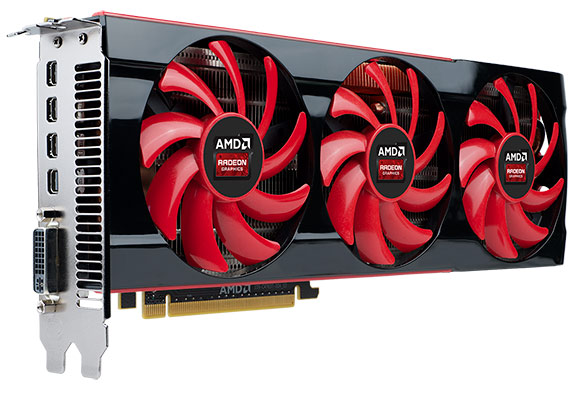AMD Radeon HD 7990 Review: The Quiet Beast
Introduction and Specifications
Today marks one of those funky occasions when you’ve probably been aware of the “new” product we’re going to show you for quite some time. And we’re not talking about a few days or weeks here either. In fact, it was all the way back in December of 2011, when AMD introduced the original Radeon HD 7970, that we first dropped hints that the dual-GPU powered Radeon HD 7990 was in the works. We dropped those hints back then because AMD dropped them on us in the lead-up to the Radeon HD 7970’s release. That little tidbit alone should give you a good idea as to how long the Radeon HD 7990 has been simmering in AMD’s kitchen.
Though the product has obviously been in development for quite some time, the Radeon HD 7990 is still an exciting proposition. Despite the relative age of its GPUs, the 7990 still has the potential to be the fastest graphics card to hit the market. NVIDIA’s been firing on all cylinders with its GeForce GTX 600 series products, but AMD has steadily wrung out additional performance from its products through updated drivers and refreshed products clocked slightly higher than their predecessors. Case in point, the Radeon HD 7970 GHz Edition and the Radeon HD 7950 with Boost, among others. AMD has also enticed consumers with its “Never Settle” bundles, which has included many of the hottest games released in recent memory.
Whatever strategery was involved that resulted in a later-than-expected launch of AMD’s dual-GPU powered Radeon HD 7990, it’s here now and we’ve got one. Its specifications are listed below and we’ve got the rest of the scoop on the pages ahead. Strap yourself in and prepare to check out AMD’s most ambitious graphics card release to date...

The AMD Radeon HD 7990: Three Fans, Two GPUs, and a Massive Heatsink
|

The Radeon HD 7990’s specifications seem very impressive upon initial inspection. It sports double the number of transistors, stream processors, texture units, ROPs, and memory as AMD’s previous flagship Radeon HD 7970. But that’s because the Radeon HD 7990 is outfitted with two of the same GPUs and the same 3GB of frame buffer memory for each. There’s a lot more to the card that just its specifications though, as we’ll show you a little later.
Before we dig into the specifics of the new Radeon HD 7990, we’d like to direct you attention to a few past articles that will help lay the foundation for what we’ll be showing you on the pages ahead. Since the pair of Tahiti GPUs at the heart of the Radeon HD 7990 are identical to ones use on AMD’s previously-released, high-end Radeon HD 7900 series products, we’ve covered many of the GPU's key features at length already. As such, we won’t be diving in to them again here.
In our coverage of the original Radeon HD 7970 GHz Edition, we discuss AMD's PowerTune Technology with Boost. In the original Radeon HD 7970 launch, we detail all of the key features of AMD’s Graphics Core Next (GCN) architecture and discuss features like PowerTune and AMD ZeroCore Power technology, GCN Tessellation, Partially Resident Textures (PRT), and Discrete Digital Multi-Point audio, among many others. In our Radeon HD 7950 coverage, we’ve got CrossFireX scores with the 7900-series and in the Radeon HD 7770 and 7750 launch piece, we detail AMD’s latest mainstream DX11 offerings and discuss how GCN was scaled down to cater to different market segments.







